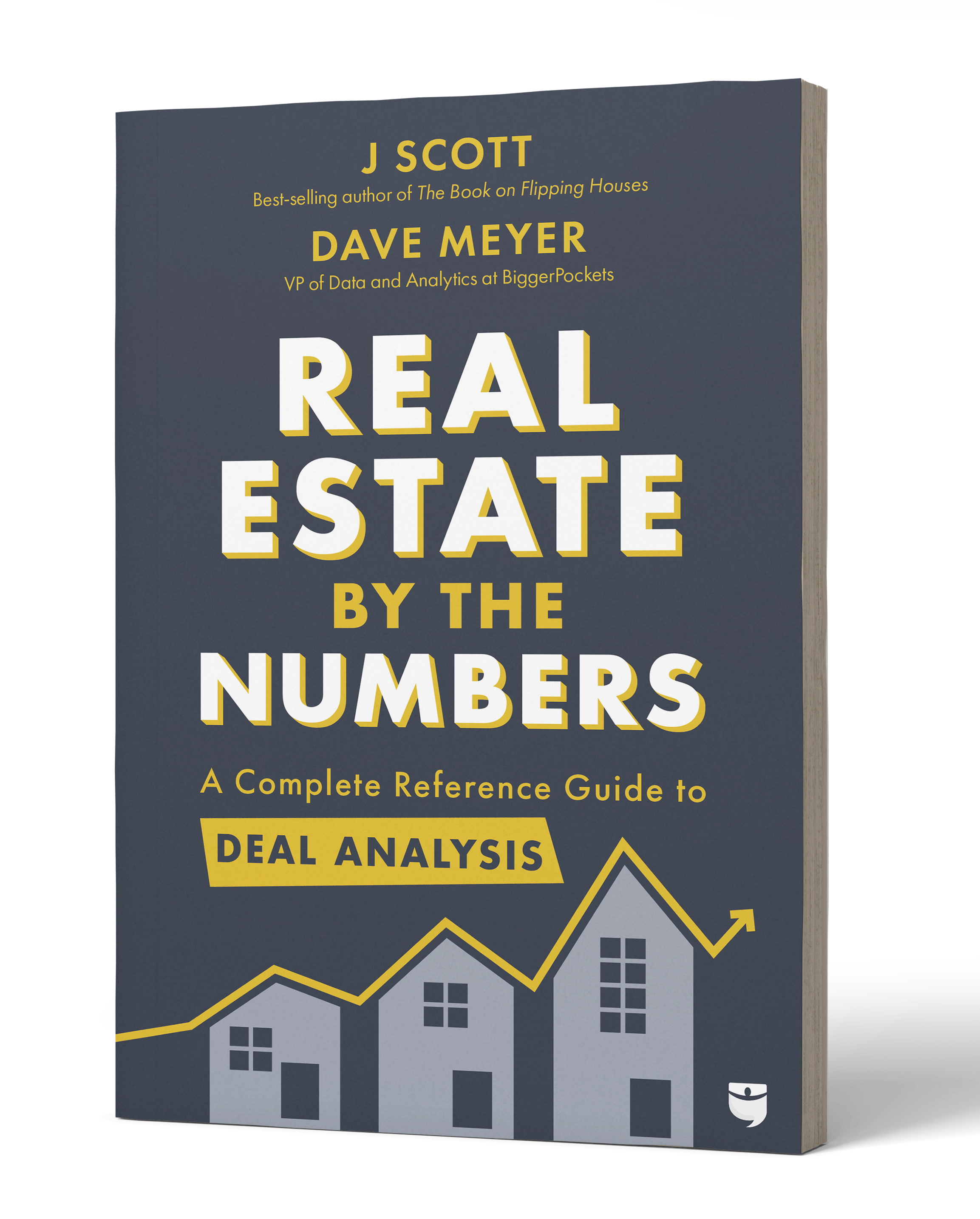Net operating income (NOI) is a fundamental real estate valuation method for real estate investors. NOI helps you calculate an investment property’s potential real estate revenue. The NOI formula is straightforward and easy to calculate, whether you need to predict potential rental income on an investment property, evaluate the purchase of a property, or consider raising rents to boost cash flow.
You deduct the operating expenses from the gross operating income (GOI) to calculate a property’s potential rental income. In other words, a property’s NOI is the difference between how much the property costs to operate and the amount of revenue it generates.
Net operating income doesn’t include expenses like debt payments, mortgage payments, depreciation, or capital expenditures in the calculation. However, NOI lets you compare the profitability of properties when buying or selling real estate. Because of this, some investors consider NOI to be the most critical metric in real estate investing.
Here’s how real estate investors can calculate NOI and use it to make important real estate investment decisions.
How Net Operating Income Helps Real Estate Investors
Net operating income (NOI) is an easy formula for calculating the potential rental income from an income-generating property. The formula uses two metrics—projected rental income and all expenses. The net operating income figure is a property’s full income, minus the total operating expenses.
The advantage of using the NOI formula is that it’s a simple calculation to determine a property’s operating performance.
Here’s how NOI operates in practical real estate terms:
- NOI and real estate investment: Calculating the difference between gross operating income and direct operating expenses is essential when evaluating properties. You can easily estimate the revenue potential from single-family homes, condos, and multifamily properties. Property compared side by side allows you to evaluate the best real estate investment.
- NOI and your rental portfolio: The real estate NOI formula is also useful in assessing the profitability of your current real estate investments. For example, a simple analysis could show that the real estate NOI property value has changed since you purchased the property. This could mean that you must start looking for ways to find additional revenue. Or you may decide to sell the rental unit at its current property value due to revenue losses.
Net Operating Income Formula
The net operating income formula is:
Net Operating Income = Gross Operating Income – Operating Expenses
Here’s a breakdown of the formula’s terms:
- Gross: The total amount of revenue before deducting fees, expenses, taxes, or commissions.
- Net: Your take-home amount after paying all related expenses.
Suppose the annual operating revenue from a single-family rental unit is $21,600. This is gross operating income. However, say that ongoing expenses amount to $4,800 annually. That means your net income after the property’s operating expenses is $16,800.
How to Calculate Net Operating Income
Although the NOI formula is straightforward, there are several variables you must consider to get an accurate picture of a property’s potential profitability. For example, you must allow for vacancy rates, all operating expenses, and additional income sources to calculate NOI.
The calculation also includes potential fluctuations for income-producing properties due to the real estate market and other factors. Here are some of the variables to consider regarding expenses and gross rental income.
Gross operating income (GOI)
Ideally, you can calculate a property’s gross operating income as monthly rent multiplied by 12 to determine the annual gross income. But remember that income can fluctuate depending on vacancy rates and potential sources of extra income.
Also, you face the possibility of a tenant not paying rent due to their lost income. In this case, you may experience a net operating loss if your rental income is less than your expenses.
Here are factors for property owners to consider when figuring out gross operating income:
- Vacancy rates: An empty rental unit affects your potential cash flow. Therefore, factor vacancy rates using metrics from comparable properties or information from the current rental property owner.
- Credit loss: It’s wise to plan for occasions when a tenant doesn’t pay their rent. Like financial loss through vacancies, credit loss impacts your bottom line.
- Additional income: Does the condo or multifamily property have additional sources of income? Some examples of a net income multiplier include:
- Vending machines
- Laundry services (e.g., coin-operated laundry machine)
- Parking fees
Operating expenses
It’s important not to confuse income with cash flow, and to know which expenses are included and disregarded in the net operating income formula.
Here are the direct operating expenses and nonoperating expenses included in the NOI calculation:
- Property repair costs and maintenance costs
- Landlord insurance
- Property management fees
- Other landlord-related expenses like accounting and legal fees
- Property taxes
The following capital expenses are not included because NOI in real estate is used to assess a property’s ongoing revenue:
- Income taxes
- Property depreciation
- Capital expenditures (e.g., installing a new roof)
- Property initial value depreciation
- Mortgage and interest payments
Why are mortgage payments excluded from operating expenses? After all, paying a mortgage may be your largest monthly expenditure, depending on the property’s purchase price. This is because these payments depend on individual investors, not on the property’s overall health.
Net Operating Income vs. Gross Operating Income
The difference between net operating income (NOI) and gross operating income (GOI) is how expenses affect the outcome.
- Gross operating income is the potential effective gross income from a property, considering vacancy and credit losses. You should also include additional income sources not included in rent, such as laundry and vending machines.
- Net operating income is the revenue after day-to-day expenses and fees are considered, such as for a property manager. The real estate NOI value is the amount of cash the property produces after the costs of owning the rental property are deducted.
Operating Income vs. Net Income
The main difference between net operating income and net income is the type of expenses included. The net operating income only refers to the revenue minus the day-to-day management costs of owning a rental property. Net income is your bottom line because it factors in debt service, mortgage payments, interest expense, operating costs, and additional income streams.
Operating income indicates the rental property’s income generation potential and is the most important metric when comparing the initial property value of real estate investment properties.
NOI Real Estate Calculation Example
Typically calculated annually, net operating income measures the potential income stream from real estate investments. You calculate NOI annually because of variations in month-to-month income and expenditure.
Here’s an example of calculating NOI using the formula:
GOI – Subtract Operating Expenses = NOI
For instance, let’s imagine you’re considering an investment property—a small multifamily property with five rental units. Here are some projected figures:
- Monthly rent for each unit: $1,600
- Potential annual rental income: $96,000 ($1,600 x 5 x 12)
- Annual income from the coin laundry machine: $1,200
Vacancy losses must also be considered to figure out a realistic GOI. The average is 10% for the area. The calculation is $96,000 x 10% = $9,600. Therefore, the gross operating income is:
$87,600 ($96,000 + $1,200 – $9,600)
The current owner’s accounts show that annual property expenses for the previous year were $16,500.
Here is the net operating income calculation:
$87,600 – $16,500 = $71,100
This real estate metric can compare the property with other potential investments. Additionally, you can judge whether you can cover your mortgage payments and calculate the property’s current market value. The NOI calculation also helps you determine the total return on investment (ROI).
NOI and Capitalization Rate
The net operating income calculation also helps determine other metrics like the capitalization rate (cap rate) and enables you to identify your potential ROI.
Here’s how to use NOI and the cap rate formula:
Capitalization rate = Net operating income ÷ purchase price
For example, let’s say that the five-unit property has a listing price of $460,000. You can use the cap rate formula to calculate the rate of return on investment:
$71,100 ÷ $460,000 = 15%
Therefore, you can use NOI and the cap rate to determine if rental properties are a sound investment and what your annual return will be.
What Is an Ideal Net Operating Income Percentage?
A common question in real estate investing is what is NOI’s best percentage? Net operating income is not expressed as a percentage. Instead, it’s a number you get when deducting operating expenses from gross operating income.
Most investors use loans from private or commercial lenders to finance their real estate investments. Therefore, it’s necessary to take into account the cost of financing when assessing properties, calculating the cap rate, and working out your business cash flow.
Generally, it’s best to look for properties in the real estate market with higher net operating income figures when compared to the property price. Most real estate professionals and investors agree that margins and operating incomes should be above 15% of the investment cost.
Why Calculating NOI Is Essential for Real Estate Investors
Net operating income (NOI) is a crucial metric in real estate investing for identifying the profitability potential of income-generating properties. By deducting operating expenses from the gross operating income (GOI), NOI provides a clear picture of a property’s revenue after considering day-to-day costs.
While NOI doesn’t include certain expenses such as debt payments and capital expenditures, it remains a fundamental tool for comparing the profitability of different properties in the real estate market. Furthermore, NOI is instrumental in determining other metrics such as the capitalization rate (cap rate), which helps assess the potential return on investment. NOI’s straightforward calculation and usefulness in evaluating a property’s operating performance make it an essential tool for every real estate investor.
Join the community
Ready to succeed in real estate investing? Create a free BiggerPockets account to learn about investment strategies; ask questions and get answers from our community of +2 million members; connect with investor-friendly agents; and so much more.






